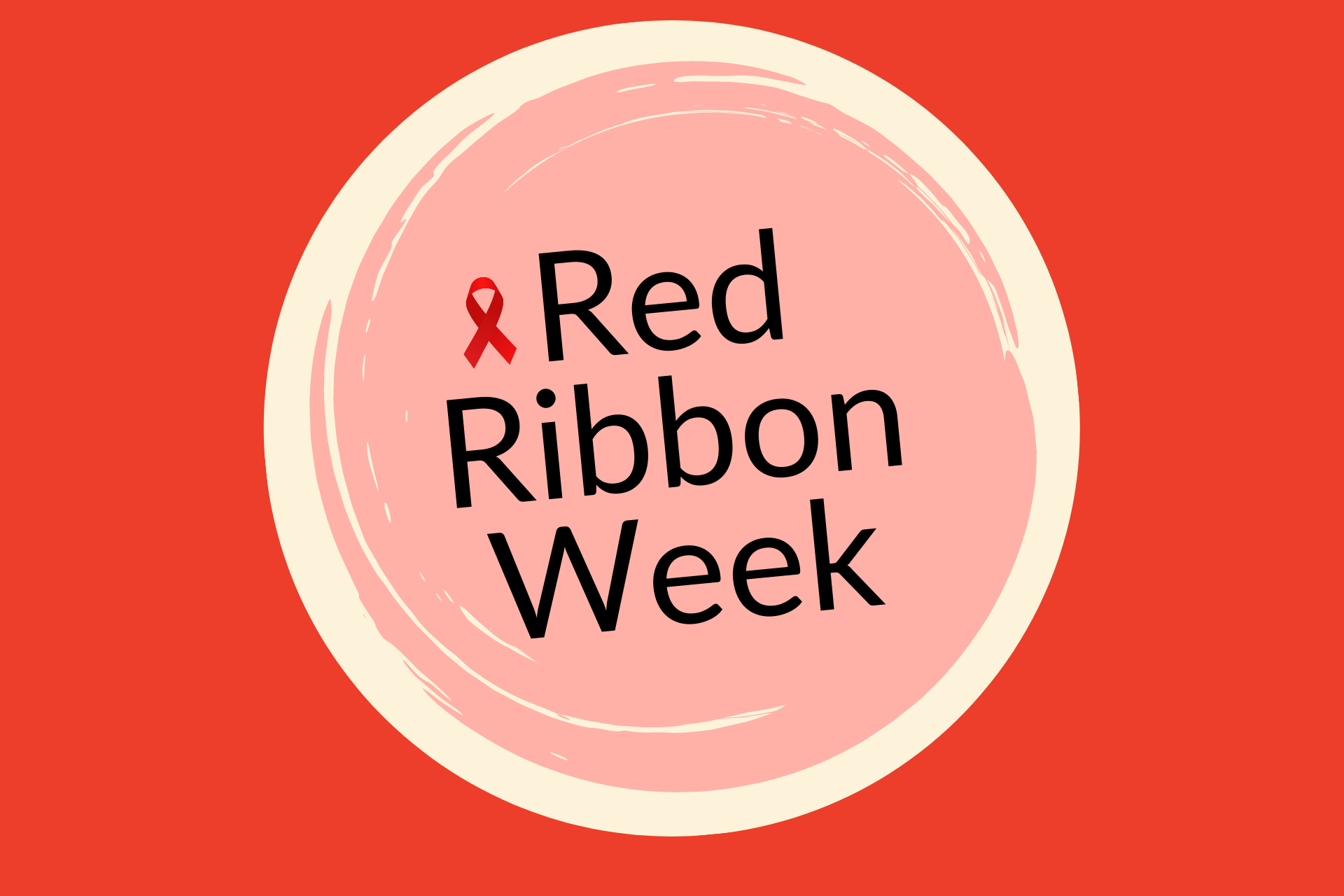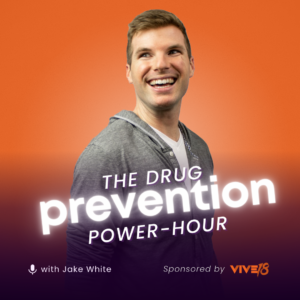It seems like every time you pick up a newspaper or watch the news, you’ll encounter another
story about teens and substance abuse. While this is far from a new issue, things have changed
a lot since the 1980s and Nancy Reagan’s “Just Say No” campaigns. With National Red
Ribbon Week coming up soon, it’s important that schools find speakers who can effectively get
messages across that teens can relate to — rather than just sit through yet another
patronizing speech.
What is Red Ribbon Week?
If you are not quite sure when, or even what Red Ribbon Week is, it’s time to get up to speed.
The Red Ribbon Campaign is sponsored by the National Family Partnership. This organization
was once known as the National Federation of Parents for Drug Free Youth and is the
same organization that First Lady Nancy Regan was once honorary chairperson.
Since its founding thirty years ago, the purpose of the Red Ribbon campaign has evolved from not just lecturing kids — but working with and educating them to tackle the dangerous and increasingly fatal issue of substance abuse in its many forms. The Red Ribbon Campaign is an ongoing initiative, but Red Ribbon Week – held annually between October 23rd and October 31 – puts a nationwide focus on substance abuse in schools and colleges across the country. Schools will often hold all kinds of events during this week, including bringing in an expert speaker to address students.
The Red Ribbon Pledge
One of the ongoing goals of the Red Ribbon Campaign is to have both students and parents
sign – and then live by – the Red Ribbon Pledge. The pledge is a promise to talk openly and honestly about substance
abuse issues, while also remaining alcohol and substance free.
The idea is that parents participate as much as children do, especially since research has found
that kids whose parents talk to them regularly about substance abuse are 42% less likely to use
drugs than those who don’t.
Teens and Substance Abuse in the 21st Century
In the thirty years since the National Family Partnership was founded, the landscape around
teen substance abuse has drastically changed. And there is some good news. According to the CDC,
teen use of the kind of “street drugs” that were so feared in the ’80s (cocaine, crack, etc.)
has fallen.
However, after dropping in the ’80s and ’90s, teen alcohol use is on the rise again.
The abuse of prescription drugs has also risen and is a growing problem, often fueled by the informed
use of drugs that were legally obtained. And while fewer teens are smoking cigarettes, a lot of them are
vaping — a habit that the adverse health risks of are only just now coming to light.
Many teens also use marijuana, and given that it’s a substance that is now legally available to
adults in many states, its use in teens is getting harder and harder to condemn — even though the
adverse effects on a teenage brain have proven to be greater than an adult brain.
All of this means that the temptations to abuse substances have changed right along with the
substances themselves. Parents may not always be the best source of help either. The current
opioid crisis means that many adults are struggling with substance abuse issues themselves
and are not in a position to help their kids.
This is why the message that Red Ribbon Day speakers can send is so important, as an increasing number of teens feel like they have no responsible adult to turn to for help. An effective speaker can help them realize that this is not the case, and that there are people
they can reach out to if and when they need help, guidance, or just someone to talk to.
What Does an Effective Red Ribbon Speaker Have to Offer?
It is almost universally agreed among modern experts that, as well intentioned as it was, the “Just Say No” attitude taken to youth substance abuse in the ’80s does not work in 2021. And neither do dry, judgmental lectures about the evils of alcohol, drugs, smoking, or vaping.
It’s also known that some of the most effective speakers on substance abuse are those who have personal experiences to bring to the table and take a non judgmental attitude to the teens who feel that bullying and peer pressure are too much to overcome for them to “just say no”.
One great example is an organization called Vive 18. Vive 18 was born out of a sober college
program and leverages sustainable strategies to get its message across to teens. Its speakers
don’t lecture. They are storytellers who have learned how to make the message
fun and engaging, while also offering kids a look at the ways they can have the fun that teens
deserve without involving substance abuse.
Since the speakers are closer in age to teens than many others, they too have grown up with the Internet and social
media and better understand the unique factors that today’s teens face when it comes to substance abuse better than those further removed from today’s teenage generation do. To learn more about Vive 18’s ideals and programs, you can
download a free guide to share with students.
Choosing a Red Ribbon Week Speaker for Your School
When it comes to choosing a speaker for your school’s Red Ribbon Week, there are a number
of things to take into consideration. Timing, location, suitability, and even budget are all factors to keep in mind as you search for the right person. Here are some tips to help:
Type of Speaker
There is an increasing number of speakers touring the country discussing the issue of
substance abuse in general. As the opioid crisis has grown over the last several years, their role
as educational speakers has become more important as well. But not all speakers are suited to effectively address a
teenage audience.
Teenagers feeling like adults don’t understand them is nothing new. No doubt — you thought for
years that your parents didn’t understand you or the issues you faced. Therefore, an older
speaker, while they may have a great message for adults, often find it harder to relate to kids.
Even if you decide to look for a Red Ribbon Week Speaker who speaks exclusively with youth,
you will still have many speakers to choose from. In order to make the best decision, try asking for
recommendations from other schools, school districts, or local health providers. And of course,
going online to watch video clips of the speakers in action helps as well.
Location
Most schools try to get the most out of a Red Ribbon Week speaker visit by ensuring that as
many pupils as possible have the chance to hear what speakers have to say. The best way to do this
is to schedule the session during school hours, so that transportation is not an issue and that other
lessons, academic, and sports commitments that students may have don’t get in the way.
Many Red Ribbon Week speakers, like those involved with Vive 18, represent a larger, ongoing
program that offers benefits that go beyond a single day of speeches. Vive 18, for example,
encourages kids to form their own Vive 18 chapter so that the tools and information they learn
from the speakers can become an ongoing part of their lives. So while a general school
assembly will likely be the best option for an initial speech, planning a way for such a
club/chapter to be accommodated on a regular basis is a good idea as well.
Where to Find Funds for Your Red Ribbon Week Speaker
Most schools work on a tight budget, and a little bit of money has to be stretched a long way. However, there
are ways you can ease the burden of the cost of hiring a speaker for Red Ribbon Week.
Here are just a few resources and ideas to get you started:
Apply for Grant Funding
There are a number of grants – Federal, State, and Private – that you may be able to apply for to
help meet the cost of hiring a Red Ribbon Week speaker. For example, on the Federal level, the
Safe and Drug-Free Schools and Communities Act (SDFSCA) may be able to provide grant
funding for a speaker that addresses alcohol, drug, and tobacco abuse prevention.
An increasing number of states also operate similar grant programs. Check with your local
school board and State Social Services department to see what might be available in your area.
Share Your Red Ribbon Week Speaker
If there are other schools in your area, it may be possible to share a Red Ribbon Week speaker.
If the distances are not unmanageable, a speaker may be willing to address students at
one school in the morning and at another in the afternoon for a reduced fee to all involved.
Sharing a speaker can be a great way to ensure that positive Red Ribbon Week
messages are heard by both middle school and high school students, and that the message is
tailored to their age group and the particular peer and social pressures they likely experience.
Get Your Red Ribbon Week Sponsored
Local businesses are often open to sponsoring school events, and approaching them to sponsor a speaker may be an effective tactic. Drug and alcohol abuse is an issue that affects more than just the people who are abusing substances — it affects entire communities and should be seen as a community issue.
Announcing a local business’s support for your Red Ribbon Week is a great way for them to gain
respect, standing, and visibility in the community, which is something every local business needs and wants.
If you need a prompt to sell your point, mentioning the fact that sponsoring your Red Ribbon
Week speaker is likely to be a lot more cost effective – and offer a greater ROI – than many other
local marketing strategies they could employ is likely to be something that savvy local business
people will respond to.
Make It a Community Effort
As we mentioned previously, drug and alcohol abuse is a community issue. Holding a fundraiser
to get a Red Ribbon Week speaker to your school can be another effective strategy. Make it fun and engaging
– a bake sale, a talent contest, a concert – and let the kids get involved in fundraising, as it can be a
great lesson on how acquiring funds and marketing work in real life.
Final Word
There are lots of events that go into making up the school year calendar, and Red Ribbon Week
is one that should not be overlooked.
Every community in the country is affected by drug and alcohol abuse, and the problem often
escalates because people do not acknowledge that a problem exists, nor are they willing to talk about it or find
solutions. This is something that needs to change, and Red Ribbon Week is a great
time to start making that change for the most vulnerable members of any community: the kids.


